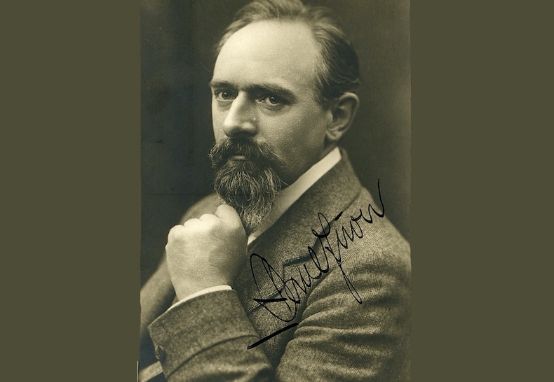Orchestral music for the 150th birthday
Christof Escher has edited eight previously unpublished orchestral works by Paul Juon, the "Swiss Tchaikovsky", for the first time.

Alongside Johann Carl Eschmann, Theodor Fröhlich, Hans Huber and Joachim Raff, Paul Juon (1872-1940) has been one of the most interesting rediscoveries and reappraisals of Swiss Romantics since the 1980s. The peer of Alexander Scriabin and grandson of a confectioner who emigrated from the Grisons to Russia occupies a special position, and not just because of his biography.
Born in Moscow and taught there at the conservatory by Jan Hřímalý (violin), Anton Arensky and Sergei Taneyev (composition), Juon spent most of his life in Russia and Germany before moving to Lake Geneva in 1934. He continued his composition studies with Woldemar Bargiel at the Hochschule für Musik in Berlin, where he himself trained composers such as Philipp Jarnach, Heinrich Kaminski, Nikos Skalkottas, Pantscho Wladigerow and Stefan Wolpe. He was awarded the Mendelssohn Prize in 1896, became a member of the Prussian Academy of Arts in 1919 and was awarded the Beethoven Prize in 1929. He also made a name for himself with music theory manuals and as a translator.
Although he was more influenced by Tchaikovsky than by Brahms, he went down in music history as the "Russian Brahms" together with Alexander Glazunov, Nikolai Medtner and Sergei Taneyev. The term "Swiss Tchaikovsky" would have been more appropriate.
His work, which was also influenced by Nordic music - Juon revised several works by Jean Sibelius - begins with music in the style of late Russian national romanticism and leads into the modern era with harmonic and rhythmic experiments as well as metric series. The latter, first applied in 1903, point to the "variable meters" developed by Boris Blacher around 1950. Following the principle of Liszt's Piano Sonata in B minor, Juon created single-movement compositions consisting of several movement-like parts.
Among the 99 compositions with opus numbers, two symphonies, three violin concertos, five piano trios, four string quartets, several sonatas and much piano music stand out.
The International Juon Society IJG, founded in Zurich in 1998 at the suggestion of the Grisons Juon biographer Thomas Badrutt, began an orchestral edition ten years ago. To mark the composer's 150th birthday on March 8, it is now completing the preparation of all eight unpublished orchestral works. These include the Symphony No. 1 in F sharp minor op. 10 (1895), a major work that is characterized by its typically Russian colouring. The Swiss conductor Christof Escher has recorded it together with the 2nd Symphony, the Fantasie Vaegtervise and the Suite op. 93 in Lugano and Moscow and released as CD recordings by Sterling (Sterling 1103-2: Fantasy, Symphony No. 2; Sterling 1104-2: Suite, Symphony No. 1).
The school musician Ueli Falett, president of the IJG since 2012, passionate violist and director of orchestra weeks, worked closely with Escher on the edition. Escher rounded off the painstaking work of editing on the basis of orchestral parts and the production of performance material using autograph scores with prefaces written by himself.
In addition to smaller pieces, the following works are now available in score and parts: Ballet suite from the dance poem "Psyche" op. 32a, Symphonic sketches "From a diary" op. 35, Dance caprices op. 96, Theme with variations o. op., Three symphonic sketches o. op. They are all located in the Bibliothèque cantonale et universitaire Lausanne (BCU), whereby only the scores can be freely accessed and downloaded: https://patrinum.ch/search?cc=AM-Fonds+Paul+Juon&ln=fr&c=AM-Fonds+Paul+Juon
The votes can be ordered until the end of 2022 via: ufalett@juon.org







